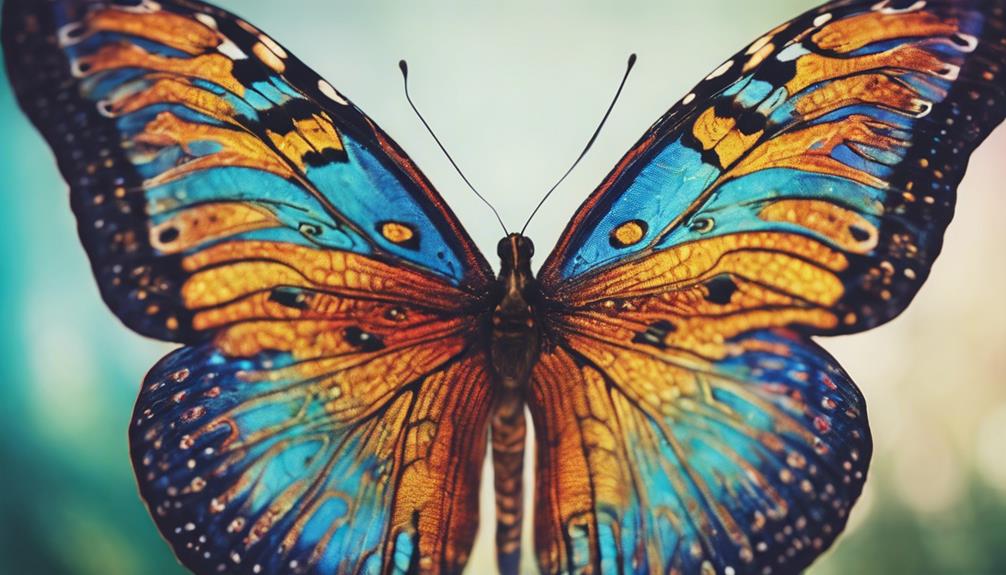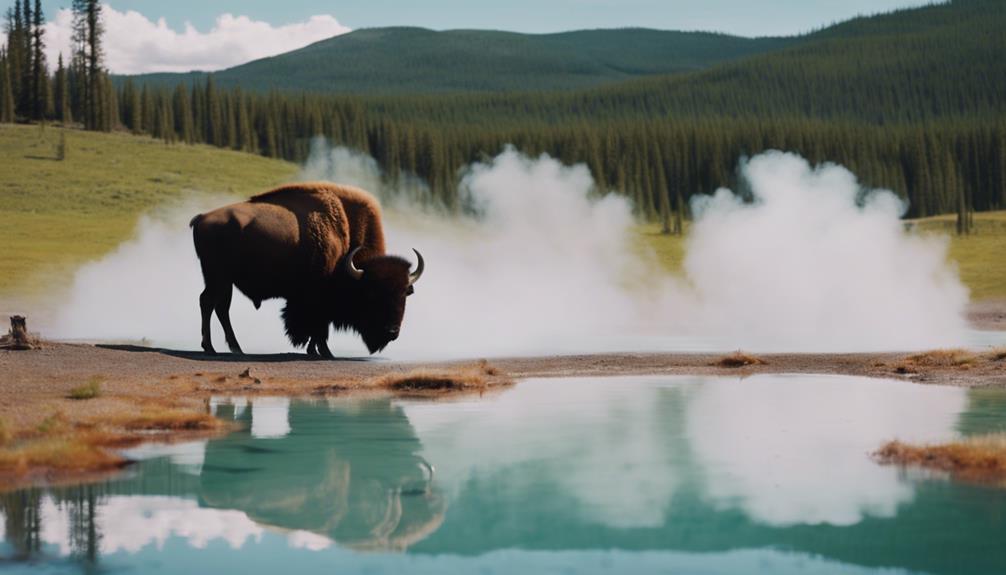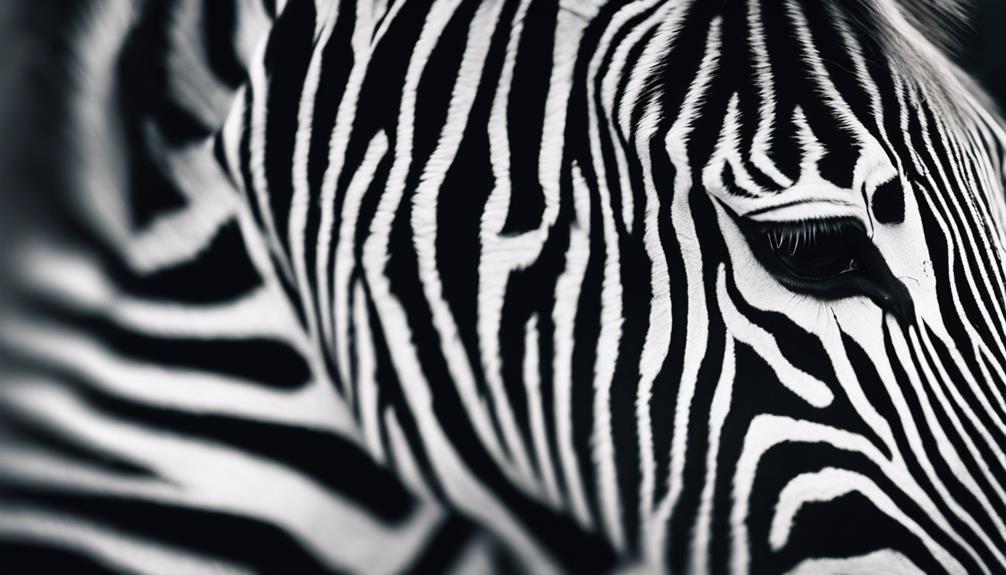Hey there!
Are you ready to be blown away by some mind-blowing facts about hay? Well, get ready to embark on an exciting journey as we uncover fascinating tidbits about this humble agricultural staple.
From its rich history and various types to its nutritional value and production process, we’ll explore all the amazing aspects of hay.
So, buckle up and get ready for a wild ride through the world of hay like you’ve never seen before!
Key Takeaways
- Hay has a long history and played a crucial role in the development of agriculture and animal husbandry.
- Different types of hay cater to the specific needs of different animals, providing essential nutrients for their health and well-being.
- The production process of hay involves cutting, drying, and proper storage techniques to maintain its quality and nutritional content.
- Hay is not only used for farming purposes but also has a presence in sports, recreation, and art, bringing joy and excitement to various activities.
The History of Hay
The history of hay dates back to ancient civilizations. It was used as a primary source of food for livestock, playing a crucial role in the development of agriculture. Hay revolutionized the way farmers fed their animals, enabling them to sustain larger herds. Its impact on agriculture cannot be overstated. It allowed for more efficient animal husbandry and increased productivity.
But hay’s significance didn’t stop there. During the industrial revolution, hay became even more essential. Urbanization led to a higher demand for meat and dairy products. Hay’s ability to preserve nutrients and provide sustenance during long journeys became instrumental in transporting livestock across vast distances. This fueled the growing cities’ agricultural needs.
The humble hay truly shaped our world. It supported both farming practices and urban growth, forever changing the way we feed our animals and ourselves.
Types of Hay
There’s a variety of hay types available for different animals. Whether you’re feeding horses, cows, or rabbits, there’s a perfect hay option to meet their needs. Here are some fascinating facts about the different types of hay:
- Timothy Hay: This classic hay has long stems and is high in fiber, making it ideal for horses and rabbits.
- Alfalfa Hay: Known for its rich nutrients and protein content, alfalfa hay is often fed to dairy cows and goats.
- Bermuda Grass Hay: This warm-season grass produces dense bales that are great for cattle grazing.
- Orchard Grass Hay: With its sweet aroma and soft texture, orchard grass hay is loved by small animals like guinea pigs.
Imagine taking a leisurely hayride through fields filled with these diverse bales of hay. The golden sun setting behind the rolling hills as you breathe in the fresh scent of nature. It’s an experience that brings people together, creating memories of belonging and joy.
Nutritional Value of Hay
Imagine how important it is for you to know the nutritional value of the hay you feed your animals. Not only does it provide sustenance, but it can also have a profound impact on their health and well-being. Hay, as a sustainable crop, offers numerous benefits beyond just being a source of food. It can be used in alternative medicine as well, showcasing its versatility and importance in various fields.
To truly understand the value of hay, let’s take a closer look at its nutritional composition:
| Nutrient | Percentage | Benefits |
|---|---|---|
| Protein | 12% | Builds and repairs tissues |
| Fiber | 30% | Aids digestion and prevents digestive disorders |
| Calcium | 0.5% | Essential for bone health |
| Vitamin A | 10,000 IU/kg | Supports vision and immune system |
| Vitamin E | 100 IU/kg | Acts as an antioxidant |
Hay Production Process
Are you ready to take a deep dive into the fascinating world of hay production?
In this discussion, we will explore the key points of cutting and drying techniques, as well as storage and transportation methods.
Get ready to uncover innovative and visionary approaches that will revolutionize the way we think about these crucial aspects of hay production.
Cutting and Drying Techniques
To ensure the hay is properly dried, you’ll need to cut it at the right stage of growth and then spread it out in thin layers.
Here are some cutting techniques and drying methods that will help you achieve the best results:
- Cut the hay when the plants are in full bloom to ensure optimal nutrient content.
- Use a mower-conditioner to cut and condition the hay simultaneously, which speeds up the drying process.
- Spread the cut hay in thin layers on a flat surface to maximize airflow and sunlight exposure.
- Consider using tedders or rakes to regularly turn and fluff the hay, promoting even drying.
By following these techniques, you’ll be able to produce high-quality hay that is not only nutritious but also visually appealing.
Your dedication to proper cutting and drying methods will result in a bountiful harvest that brings joy and belonging into your farming community.
Storage and Transportation Methods
When storing and transporting hay, it’s important to consider factors such as moisture levels, temperature control, and proper stacking techniques.
Ensuring the right storage conditions for your precious hay can make all the difference in maintaining its quality and value. By implementing innovative hay storage techniques, you can create an environment that preserves the nutritional content while minimizing spoilage risks.
Visionary methods like using tarps or covers to shield against rain and snow can prevent moisture damage. Influential strategies such as baling at the optimal moisture level can help maintain hay freshness during transportation. Proper stacking techniques ensure efficient use of space while reducing the risk of mold growth.
With these cutting-edge approaches to hay storage and transportation methods, you will have a sense of belonging among fellow farmers who prioritize excellence in every step of their harvesting process.
Hay as Animal Feed
Did you know that hay is a nutritious source of animal feed? It not only provides essential nutrients but also offers several benefits for both the animals and the environment. Check out these reasons why hay is an excellent choice for animal feed:
-
Hay as biofuel: Did you know that hay can be used as a source of renewable energy? It can be converted into biofuel, reducing our dependence on fossil fuels and helping to mitigate climate change.
-
Hay as a sustainable farming practice: Growing hay is a sustainable farming practice that helps maintain soil health and prevents erosion. By choosing hay as animal feed, you are supporting environmentally friendly agriculture.
-
Nutritional value: Hay contains fiber, protein, vitamins, and minerals necessary for the healthy growth and development of animals. It keeps their digestive systems working properly while providing them with the energy they need.
-
Cost-effective: Using hay as animal feed is cost-effective compared to other commercial feeds. It allows farmers to save money without compromising the quality of their livestock’s diet.
Hay as Bedding Material
Hay can serve as a comfortable and absorbent bedding material for animals. It’s not just for feeding them, you know! Hay has many innovative uses that are both visionary and influential.
For example, did you know that hay can be used as compost material? When mixed with other organic waste, it breaks down into nutrient-rich soil that helps plants grow strong and healthy.
Additionally, hay can also be used as insulation material. Its natural fibers create a barrier against cold temperatures, keeping animals warm during the chilly winter months.
Hay for Soil Improvement
Imagine a world where your garden flourishes with lush, vibrant plants. Picture the soil teeming with life, rich in nutrients and moisture.
This vision can become a reality by harnessing the power of hay. Not only does hay possess nutrient-rich properties that nourish the soil, but it also acts as a natural mulch, promoting water retention and weed suppression.
With hay as your secret weapon, your garden will transform into an oasis of abundance and beauty.
Hay’s Nutrient-Rich Properties
Hay’s nutrient-rich properties make it an excellent source of nourishment for livestock. Its impact goes beyond mere sustenance, as hay plays a vital role in sustainable agriculture and leaves a positive environmental footprint.
Consider the following:
-
Hay acts as a natural fertilizer, enriching the soil with essential nutrients that enhance crop growth and yield.
-
By reducing erosion and promoting moisture retention, hay helps maintain soil health and prevents degradation.
-
The cultivation of hay supports biodiversity by providing habitat for various insects, birds, and small mammals.
-
Hay production is a sustainable practice that reduces greenhouse gas emissions compared to other feed sources.
With its ability to support healthy livestock while nurturing the environment, hay embodies the spirit of sustainability. Incorporating hay into agricultural systems not only ensures food security but also fosters a sense of belonging to a community striving for harmony between nature and agriculture.
Hay as Natural Mulch
When used as natural mulch, hay helps to suppress weed growth and retain soil moisture.
Imagine a garden where weeds are banished, and your plants thrive in their verdant kingdom. Hay, the humble golden strands, holds the power to make this vision come true.
Its innovative qualities not only suffocate unwanted weeds but also provide insulation for the soil beneath. As you sprinkle a layer of hay around your precious plants, it forms a protective barrier against invasive weed seeds, preventing them from germinating and stealing vital nutrients from your beloved flora.
Moreover, this organic blanket locks in moisture within the soil, reducing water evaporation and ensuring your plants receive the hydration they need to flourish.
Embrace the natural beauty of hay as a weed suppressant and an efficient insulator; let it transform your garden into a paradise of belonging for both you and your plants.
Hay in Art and Decor
Did you know that hay is used as a decorative element in various forms of art and decor? It may sound surprising, but artists and designers have found innovative ways to incorporate hay into their creations, giving them a unique and rustic touch.
Here are some examples of how hay can be used in art and decor:
- Hay bales transformed into seating arrangements for outdoor events, creating a cozy and natural atmosphere.
- Intricate sculptures made entirely out of tightly packed hay, showcasing the artist’s creativity and skill.
- Hay wreaths adorned with flowers or ribbons, adding a charming rustic vibe to any door or wall.
- Hay-filled vases or baskets used as centerpieces, bringing an earthy feel to table settings.
By incorporating hay art and decor into your surroundings, you can create a warm and inviting space that embraces nature while also showcasing your own sense of style.
Hay in Traditional Medicine
Are you ready to explore the fascinating world of hay and its incredible health benefits?
Get ready to be amazed as we dive into the historical uses of hay in traditional medicine and discover its modern applications.
From soothing respiratory issues to promoting digestive health, hay has been a staple in natural remedies for centuries.
Join us on this visionary journey and unlock the potential of this humble yet powerful resource.
Health Benefits of Hay
Hay’s health benefits include providing essential nutrients and aiding in digestion.
But did you know that hay can also have a positive impact on allergies and respiratory health? It’s true! Here are some exciting facts about how hay can benefit your overall well-being:
-
Hay’s role in reducing allergies: Hay contains natural compounds that can help reduce the severity of allergic reactions. By exposing yourself to small amounts of hay, you may build up immunity over time and experience fewer allergy symptoms.
-
Hay’s benefits for respiratory health: Breathing in the fresh scent of hay can have a soothing effect on your respiratory system. It helps to clear out any congestion or irritation, promoting healthy lung function.
-
Improved air quality: The presence of hay in your surroundings can act as a natural air purifier, filtering out dust particles and pollutants, leading to cleaner indoor air.
-
Stress relief: Spending time around bales of fragrant hay has been known to reduce stress levels, creating a tranquil environment where one can find solace and relaxation.
Historical Uses of Hay
Back in the day, farmers used hay as a building material for thatched roofs and insulation. The historical significance of this practice cannot be understated. Hay played a vital role in shaping cultural traditions around the world.
It provided shelter and protection from the elements, allowing communities to thrive in harsh environments. As time went on, hay became more than just a practical necessity; it became a symbol of resilience and resourcefulness. The use of hay in construction showcased our ancestors’ innovative spirit and their ability to adapt to their surroundings.
These traditions have been passed down through generations, reminding us of our shared heritage and inspiring us to find creative solutions to modern challenges. Embracing the historical significance of hay helps us feel connected to our roots while fostering a sense of belonging within our communities.
Modern Applications of Hay
You can discover a wide range of innovative uses for hay in modern times. It’s not just for feeding animals anymore! Hay has found its way into various industries, showcasing its versatility and eco-friendliness.
Here are some visionary applications of hay that will leave you inspired:
-
Modern applications of hay in architecture: Imagine buildings constructed with bales of tightly packed hay, providing excellent insulation and reducing the need for energy consumption. These structures blend seamlessly with the environment, creating sustainable spaces that prioritize both aesthetics and functionality.
-
Hay in sustainable fashion: Who would have thought that hay could be fashionable? Designers are incorporating this natural material into clothing, accessories, and even footwear. From unique textures to earthy tones, hay brings a touch of nature to your wardrobe while promoting sustainability.
Embrace the innovation and join the movement towards a more sustainable future by exploring these modern uses for humble hay. You’ll not only belong to a community striving for change but also contribute to a better world.
Hay in Folklore and Superstitions
Don’t believe the superstition that walking over hay can bring bad luck. Hay has long been intertwined with myths and rituals, playing a significant role in folklore across different cultures.
From ancient times to the present day, hay has been associated with abundance, fertility, and protection against evil spirits. In many mythologies, it is believed that sleeping on a bed of hay can enhance one’s connection to nature and bring about vivid dreams filled with wisdom.
Moreover, hay has been used in various rituals to ward off negative energy or attract good fortune. Its golden hue and fragrant scent symbolize prosperity and unity within communities.
Hay in Literature and Poetry
In literature and poetry, hay has been portrayed as a symbol of rustic beauty and simplicity, evoking images of rolling fields and idyllic countryside settings. It holds a special place in the hearts of those longing for a sense of belonging.
Just imagine:
-
Hay in Music: The gentle strumming of an acoustic guitar, accompanied by lyrics that speak to your soul, transporting you to a sun-kissed hayfield where melodies dance on the breeze.
-
Hay in Fashion: Fashionistas don straw hats adorned with dried flowers, while models strut down runways wearing flowing dresses made from delicate strands of hay, celebrating nature’s raw elegance.
Through these artistic expressions, hay becomes more than just fodder for livestock; it embodies timeless charm and speaks to our desire for grounding simplicity.
Hay in Sports and Recreation
Sports and recreation enthusiasts can enjoy the thrill of hayrides during the fall season, immersing themselves in the joyous atmosphere of hay-filled wagons and crisp autumn air.
But did you know that hay has also made its mark in the world of sports? While not a conventional sport, hay is an essential component in some outdoor games and even had a presence at the Olympics.
In traditional Highland Games, participants engage in activities like tossing bales of hay over high bars or rolling them across fields. These unique events highlight both strength and agility while showcasing the versatility of hay.
Additionally, at the 1900 Summer Olympics in Paris, there was a tug-of-war competition that took place on a field covered with fresh hay to provide better footing for athletes.
Hay truly brings excitement and fun to various recreational activities, providing a sense of connection and belonging for those who participate. So why not embrace this unconventional use of hay and explore these outdoor games for yourself?
Fun Facts About Hay Around the World
Now that you’ve learned about the role of hay in sports and recreation, let me take you on a journey to discover some fun facts about hay around the world.
Get ready to be amazed by the incredible creativity and artistry that people display when it comes to this humble material.
Imagine yourself at a hay festival, surrounded by stunning hay sculptures that seem to defy gravity. Here are some fascinating things you might encounter:
- Marvel at towering castles crafted entirely from bales of golden hay.
- Admire intricate animal sculptures brought to life using nothing but dried grasses.
- Explore whimsical landscapes made entirely out of straw and twine.
- Experience the wonder of enormous haystack mazes, where every turn is an adventure.
These breathtaking displays of ingenuity and imagination showcase just how versatile and inspiring hay can be.
Frequently Asked Questions
How Long Can Hay Be Stored Before It Goes Bad?
Hay can be stored for a long time before it goes bad. This storage duration is beneficial for soil health, as hay helps retain moisture and adds organic matter to the soil.
Can Hay Be Used as a Fuel Source?
Hay can indeed be used as an eco-friendly fuel source and has the potential to become a renewable energy source. Its abundance and low environmental impact make it an innovative and visionary solution for a sustainable future.
Are There Any Specific Types of Animals That Should Not Be Fed Hay?
Some animals, like rabbits and guinea pigs, should not be fed hay that has been stored improperly or is moldy. It’s important to ensure proper hay storage to keep your animals healthy and safe.
What Are Some Alternative Uses for Hay Besides Animal Feed and Bedding?
Hay is more than just animal feed and bedding. It can also be used as a decoration, adding a rustic touch to your home. In art, hay can be sculpted or used in installations, showcasing its versatility and creativity.
Are There Any Unique Traditions or Festivals Around the World That Involve Hay?
Hay-related festivals and celebrations around the world bring communities together in creative and joyful ways. People use hay to create stunning art and sculptures that inspire awe and wonder. Join these unique traditions and be part of something extraordinary.
Conclusion
Congratulations! You’ve just discovered a treasure trove of fascinating information about hay. From its rich history to its various types and nutritional value, hay holds a special place in the world of agriculture and animal feed.
But it doesn’t stop there! Hay’s presence can be found in folklore, literature, and even sports. These fun facts about hay are sure to leave you inspired and intrigued by this humble yet remarkable crop.
So go forth and share your newfound knowledge with others, igniting their curiosity about the wonders of hay!





